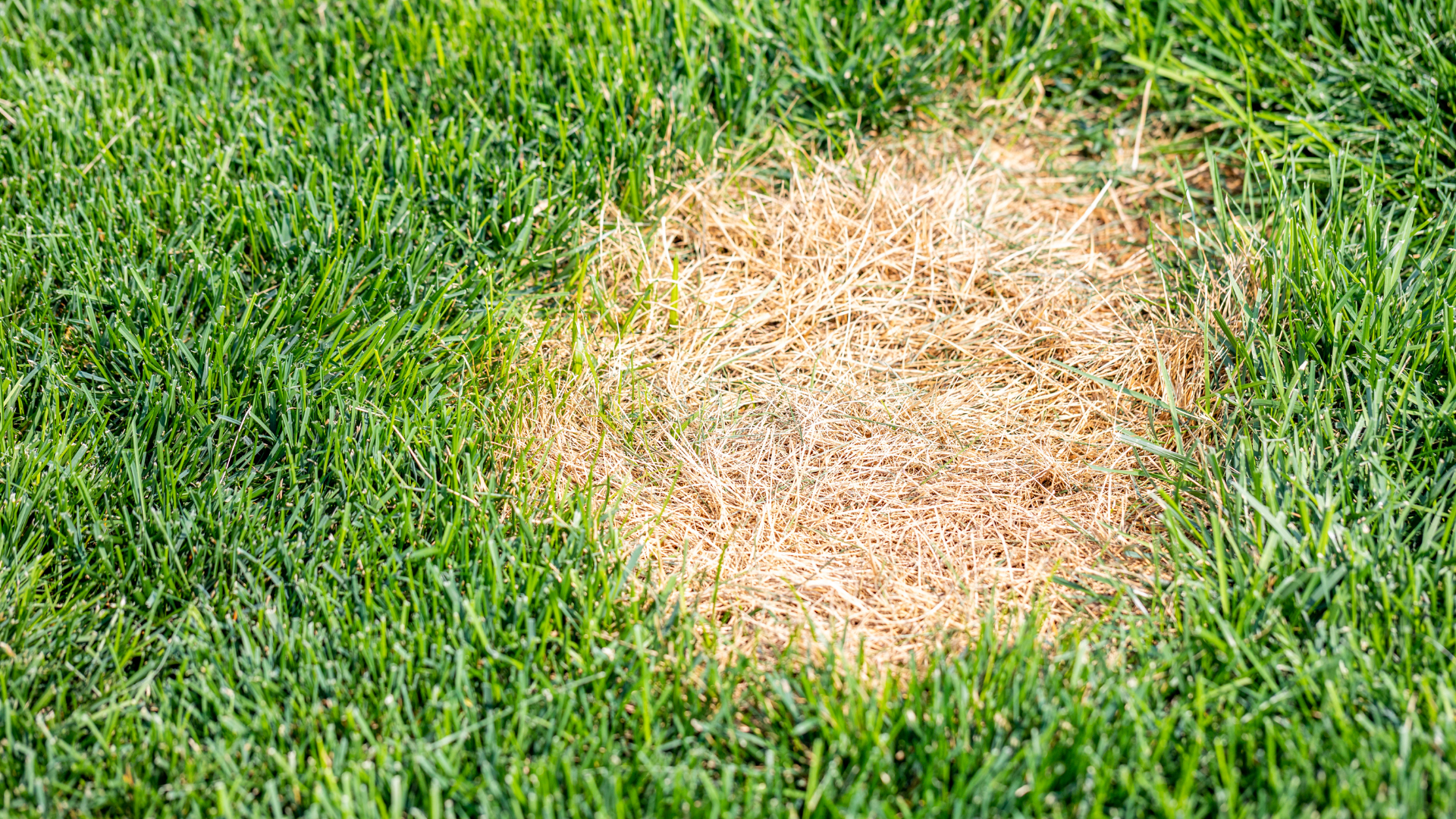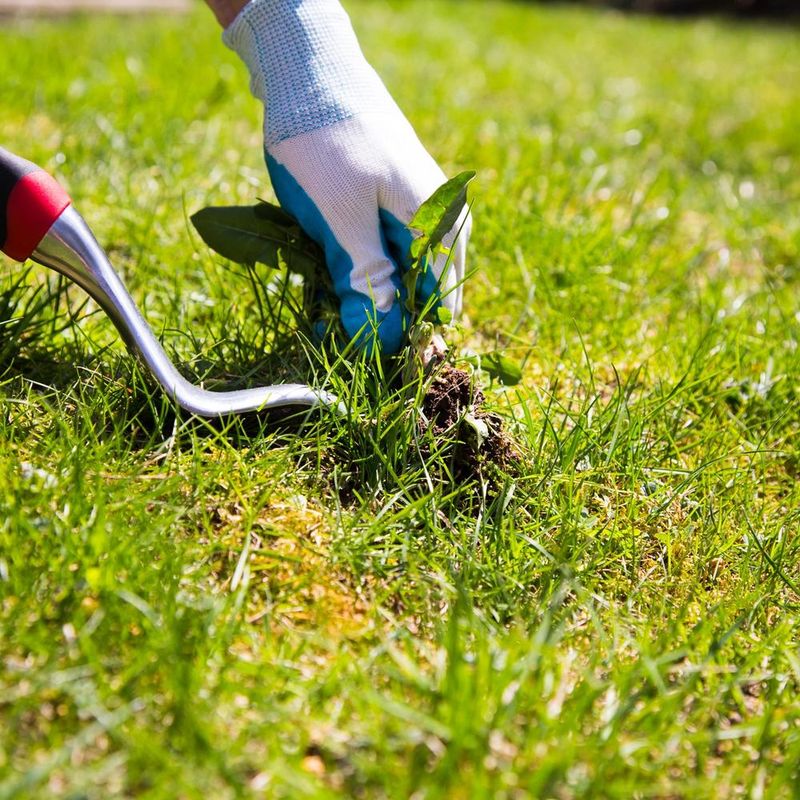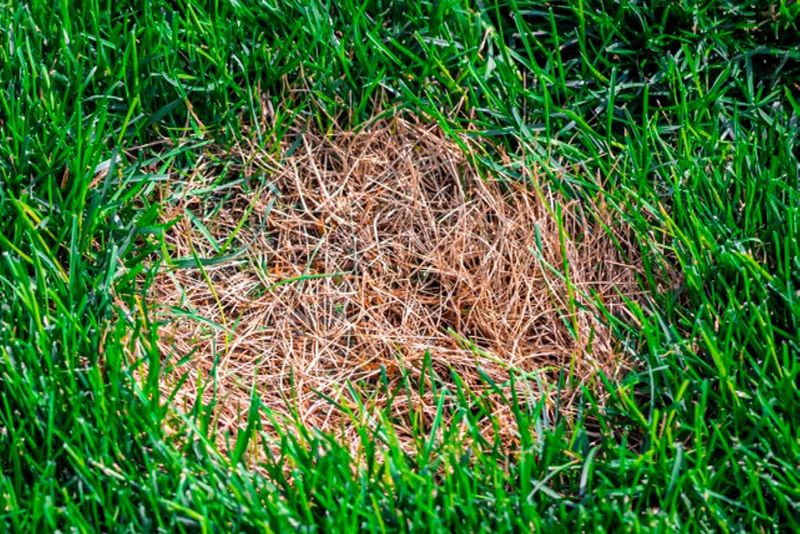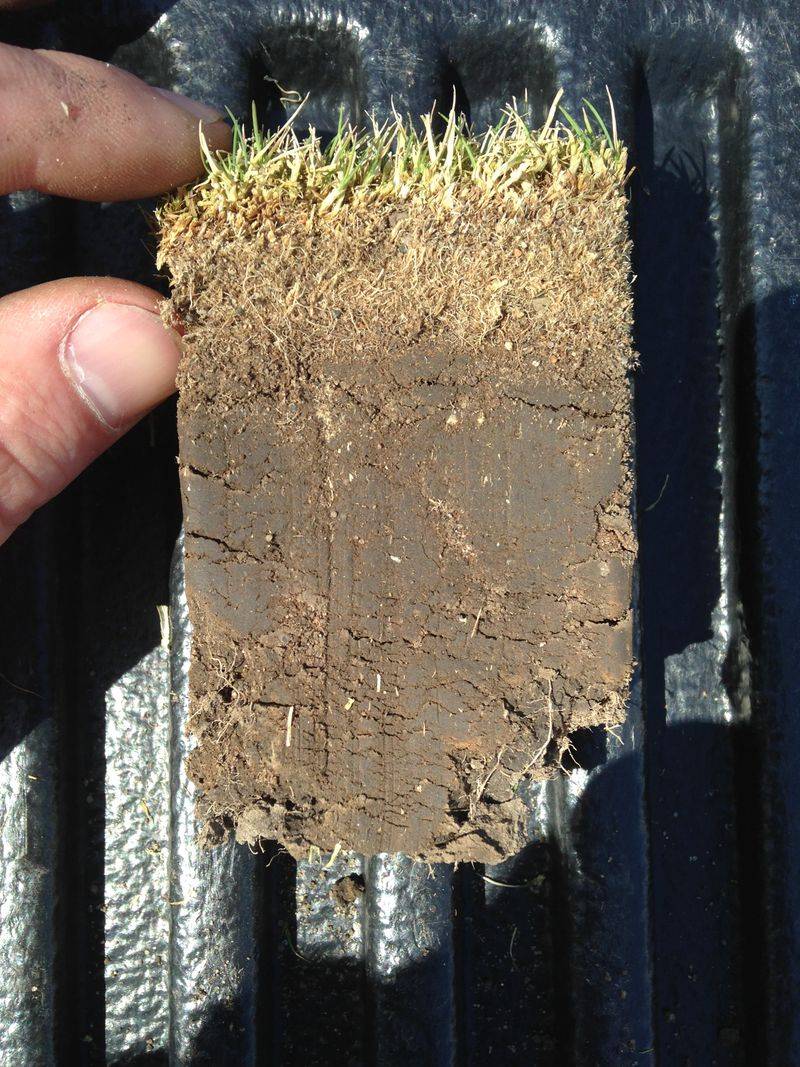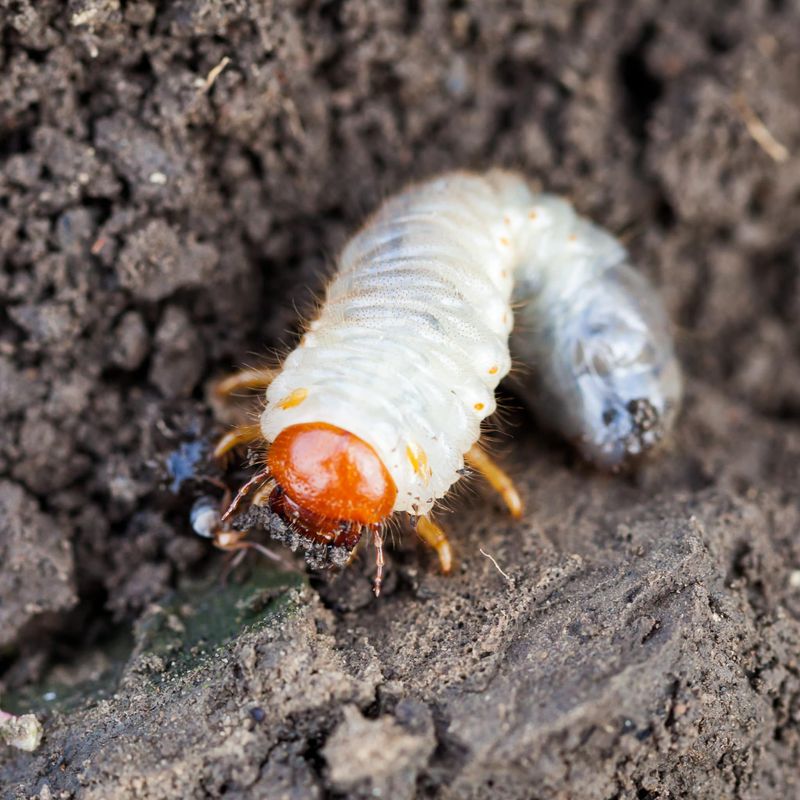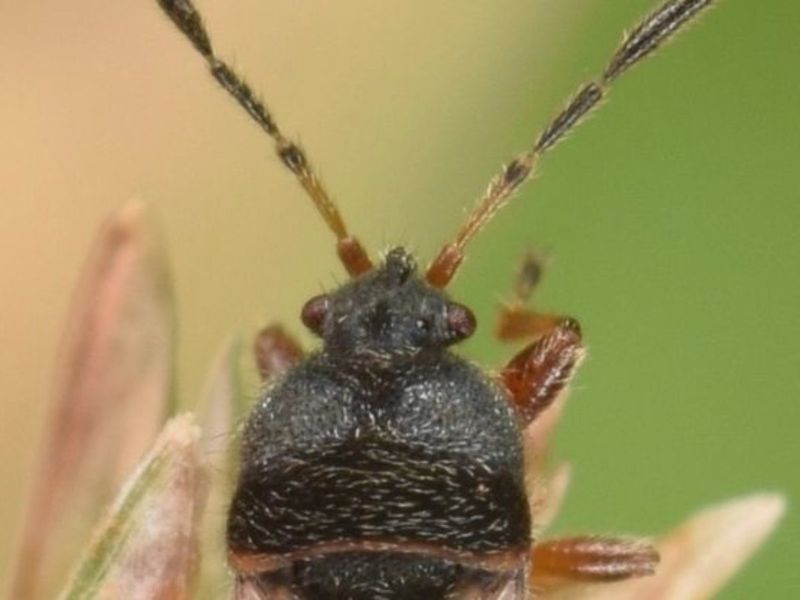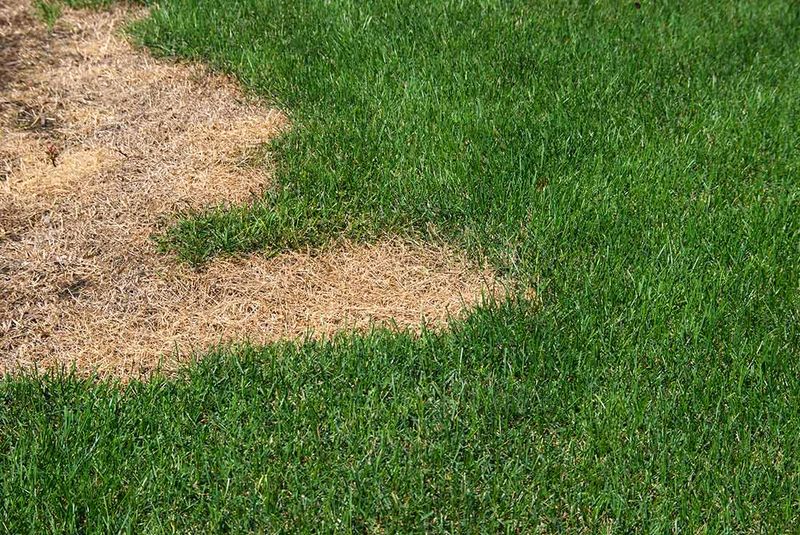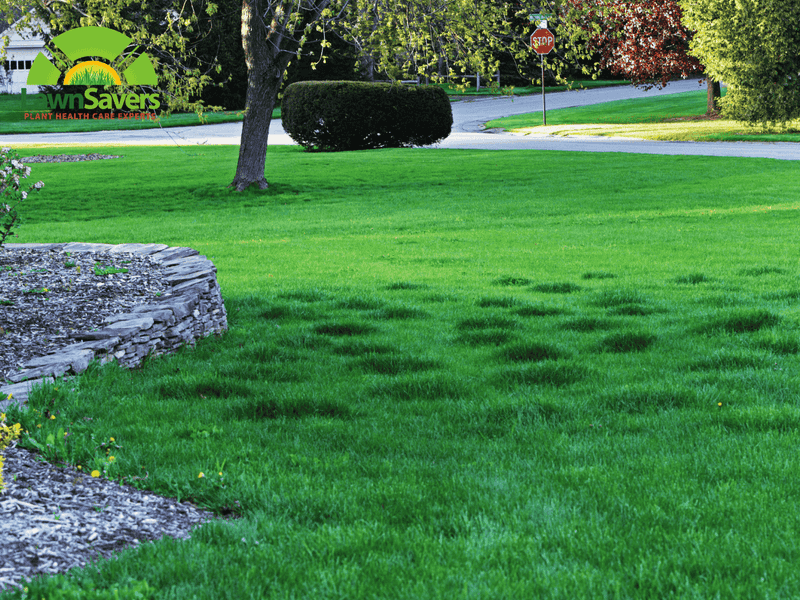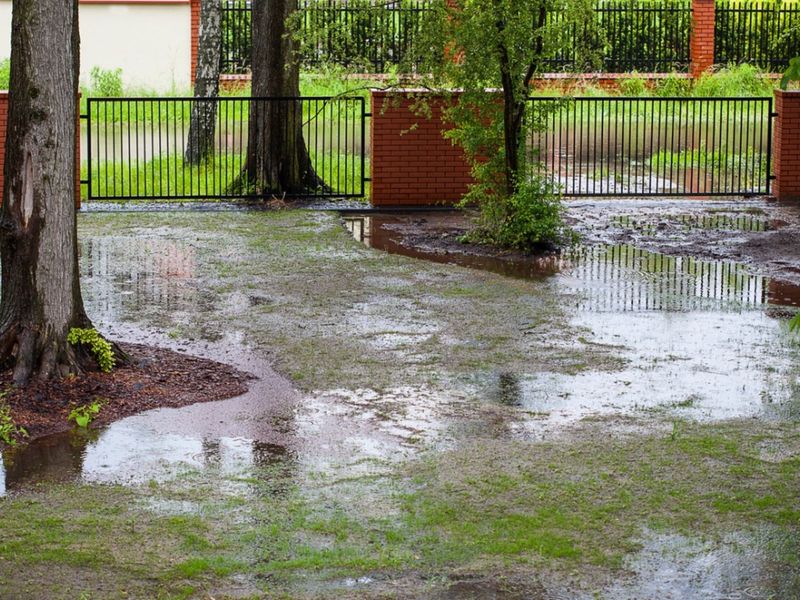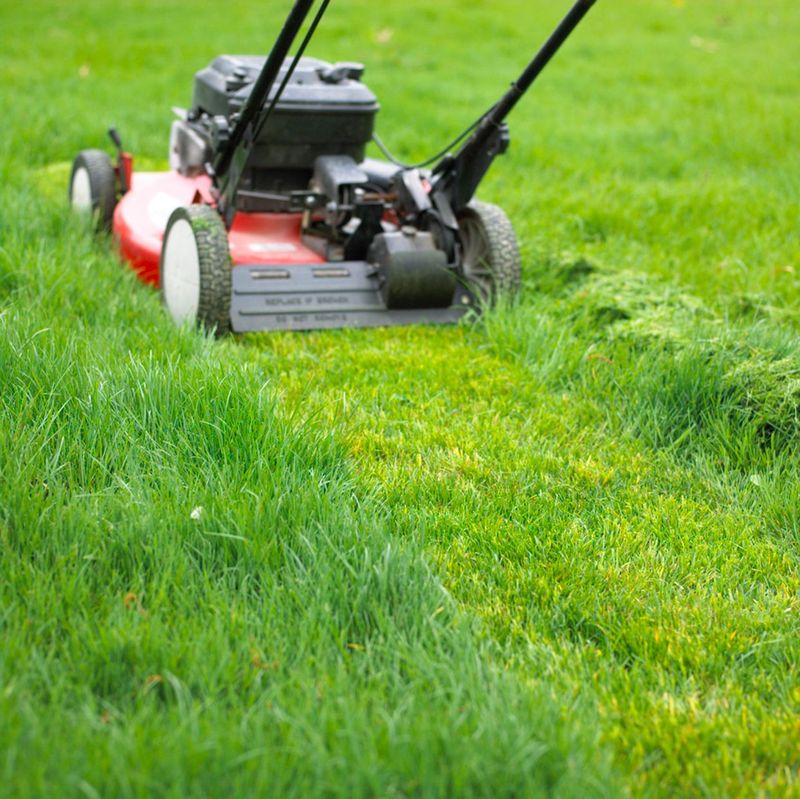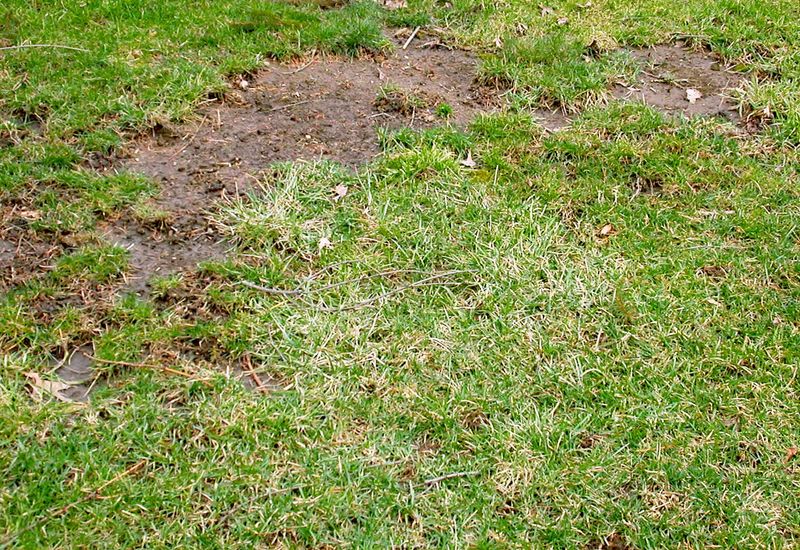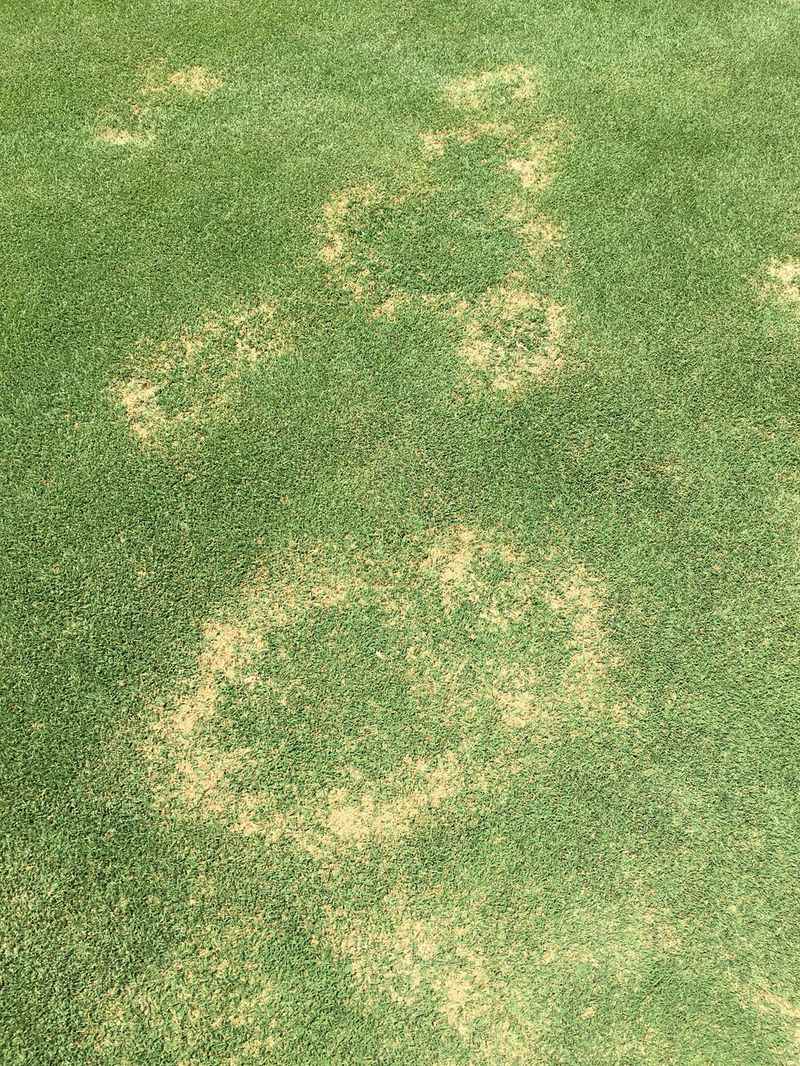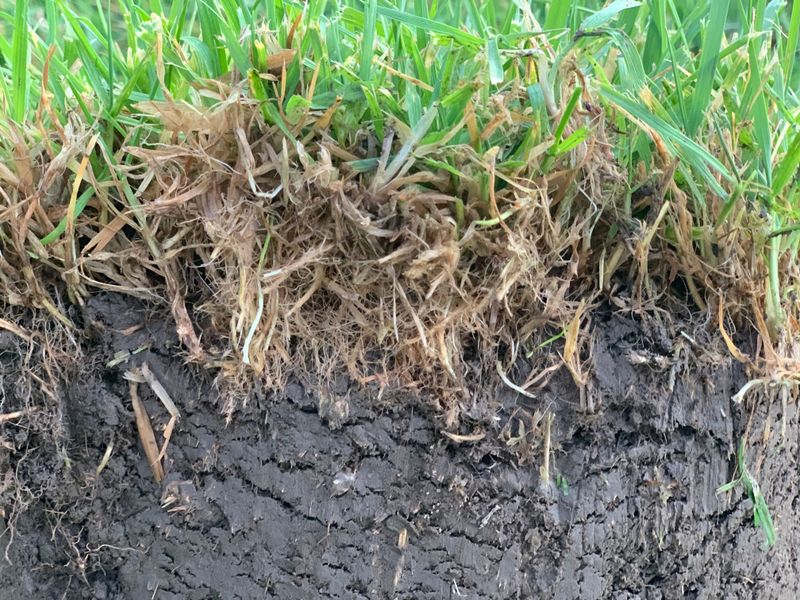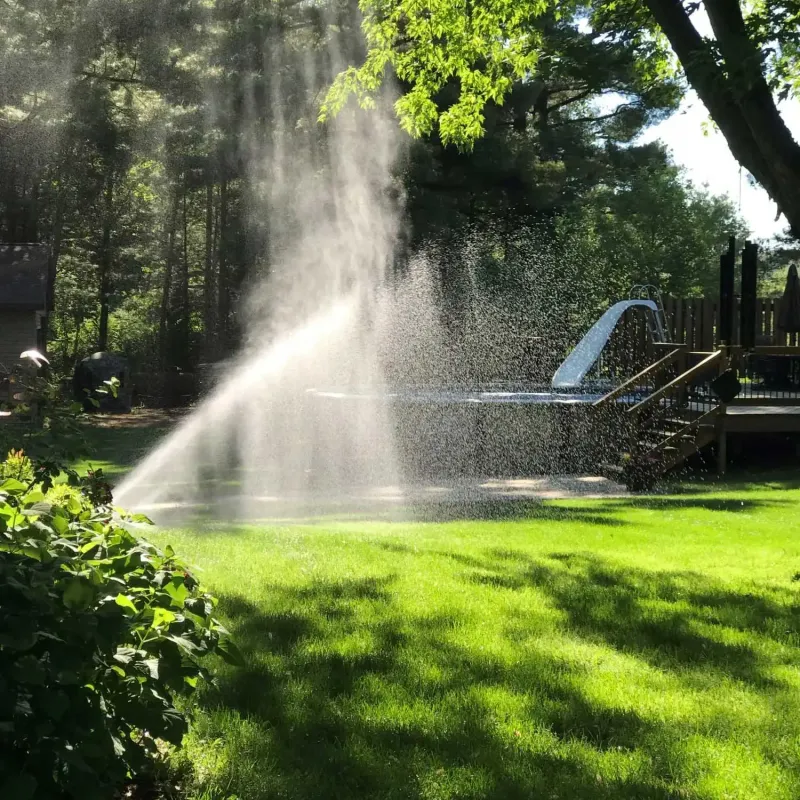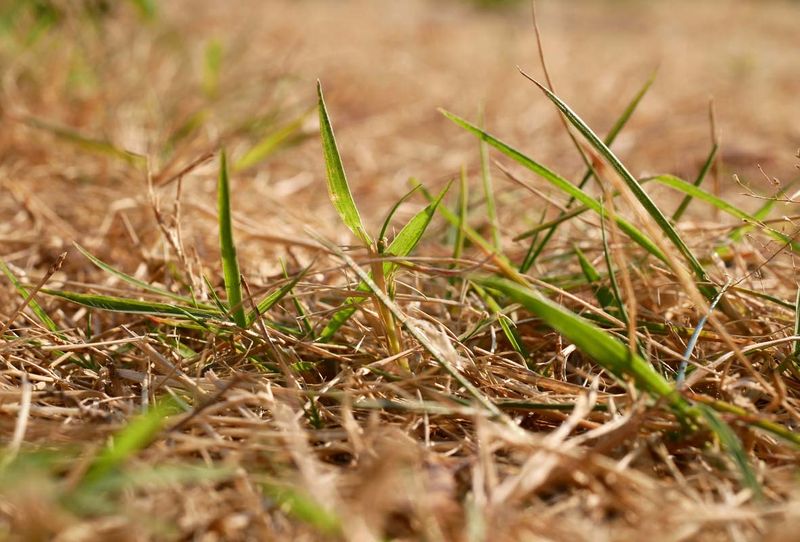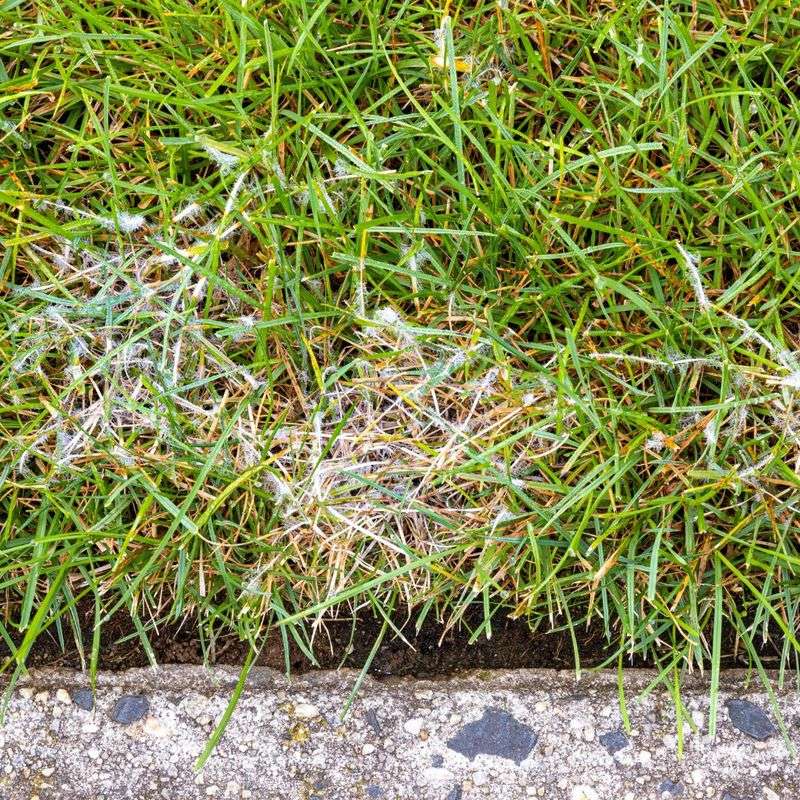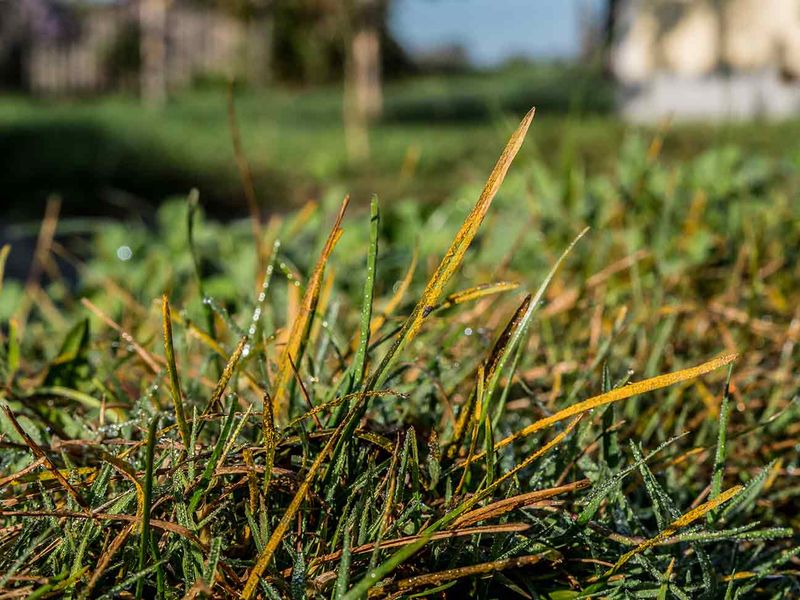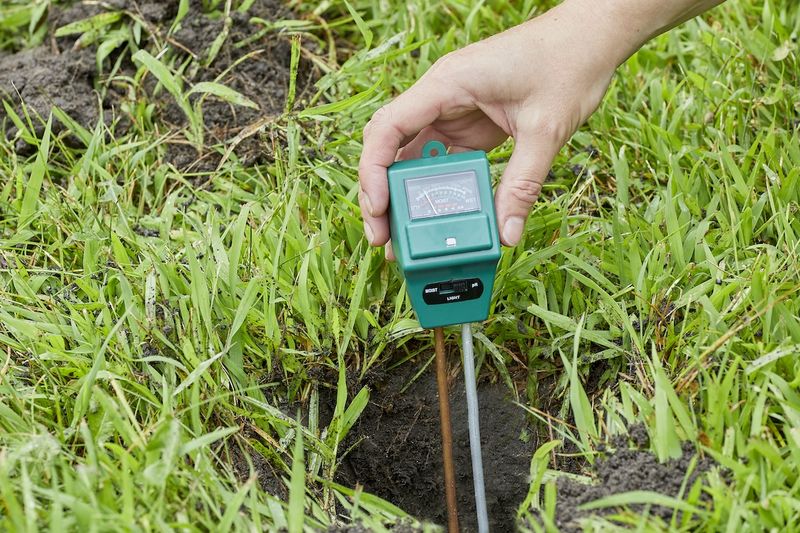Maintaining a perfect lawn is like juggling flaming swords. Challenging, a little terrifying, but oh-so-impressive when you nail it!
Trust me, I’ve had my fair share of lawn disasters. From mysteriously appearing brown spots to battling weeds that seem to have their own agenda, it feels like my yard has a secret vendetta against me.
But here’s the thing: fixing it doesn’t need to be a wrestling match. A little aeration, a dash of fertilizer, and some patience go a long way.
1. Weeds
Weeds can seem like those unwanted party guests. They sneak into the lawn, taking up space and resources from your grass.
These intruders, like dandelions, can be persistent, popping up everywhere. The solution? Regular mowing and a bit of elbow grease pulling them out. Herbicides can also be an ally in this fight.
Spot treatment is effective, ensuring your grass doesn’t get caught in the crossfire. It’s like being a determined bouncer at an exclusive club, keeping the gatecrashers out.
2. Brown Spots
Brown patches are like unexpected stains on a favorite shirt. The lawn’s version of a beauty faux pas. Often caused by fungi, they can also result from over-fertilization or pet urine.
Addressing the root cause is crucial. Aerate the soil regularly to improve air circulation. A balanced fertilization schedule helps, too, preventing nutrient overload.
It’s like giving your lawn a balanced diet, ensuring it’s neither starved nor overindulged. Remember, moderation is key to avoid these unsightly spots.
3. Thatch Buildup
Thatch can be sneaky, building up unnoticed. It’s that layer of dead grass and roots that sits on the soil’s surface, acting like a sponge for water and nutrients.
Too much can suffocate the grass. The fix is simple: dethatching. Use a rake or specialized machine in the spring when the grass is robust.
This clears the way for essential nutrients to reach the roots. Think of it as a mini lawn renovation, making way for a healthier yard.
4. Pest Infestation
Ah, pests! Those tiny invaders that can turn a lawn into their personal buffet. I once battled armyworms that devoured my grass overnight.
It’s crucial to identify these critters early. Organic pesticides or beneficial nematodes can help control them. Regular inspection and healthy lawn practices keep these bugs at bay.
It’s like having a neighborhood watch for your backyard, ensuring no unwelcome guests stick around. Trust me, prevention is way easier than dealing with a full-blown infestation.
5. Compacted Soil
Feeling like a dance floor after a concert, compacted soil is rock hard, making it tough for grass roots to spread. This can lead to sparse growth.
Aerating is the way to go, poking holes into the lawn to let it breathe. This process alleviates compaction and helps water, air, and nutrients reach the roots.
Imagine giving your lawn a good stretch after a long day. The difference is astonishing, and the grass will thank you by growing big and green.
6. Chinch Bugs
Chinch bugs are tiny bandits, stealthily sucking the life out of grass. They cause yellow patches that turn brown, mimicking drought stress.
A simple test: part the grass and watch for these critters. Use insecticidal soap or neem oil to manage them effectively. Maintaining a healthy lawn with proper watering and fertilization helps deter these pests.
It’s like setting up defenses for your home. You prevent issues before they start. Keep vigilance high, and chinch bugs won’t stand a chance.
7. Moss
Moss on a lawn might seem cool, but it’s a sign of poor conditions. It thrives in shady, compacted, or nutrient-poor areas, outcompeting grass.
The key is to improve conditions: aerate the soil and adjust pH levels. Trim overhanging branches to increase sunlight. Consider overseeding with shade-tolerant grass.
This approach transforms the lawn into a friendlier environment for grass. It’s like remodeling a room to make it more inviting, ensuring the grass feels right at home. Watch moss retreat in no time.
8. Grubs
Grubs are like underground bandits, feasting on grass roots. This can lead to large brown patches. The telltale sign is turf that lifts easily like a carpet.
To combat grubs, apply milky spore or beneficial nematodes. Early detection is vital. Inspect regularly in late summer. It’s like having a security system for your lawn, catching trouble before it escalates.
With vigilance and the right approach, grubs can be kept in check, ensuring your lawn remains green.
9. Lawn Burn from Fertilizer
Lawn burn looks like a sunburn on your yard. It’s often the result of too much fertilizer. Over-fertilizing can scorch the grass, leaving unsightly patches.
Watering the area thoroughly can help dilute the excess. To prevent future burns, use a slow-release fertilizer and apply it evenly.
It’s like applying sunscreen. Too much, too fast, and you’ll end up red and sore! Avoid the mistake by being cautious, ensuring your lawn gets the nutrients it needs without the burn.
10. Uneven Growth
Uneven growth is like a bad haircut. It just doesn’t look right. Often, it’s due to inconsistent mowing or differing soil conditions.
Adjust your mowing habits, ensuring blades are sharp and grass is cut at the right height. Regular soil tests can help adjust nutrients as needed.
It’s like finding the perfect barber who knows just how to trim those unruly patches. Consistency is key, and with the right care, your lawn will look even and well-maintained.
11. Poor Drainage
Standing water on a lawn is like having a swampy backyard. I’ve dealt with this soggy mess. It ruins the grass and invites pests.
Improve drainage by aerating the soil and adding organic matter. Redirecting runoff can also help. It’s like setting up a proper plumbing system, ensuring water flows where it should.
A well-drained lawn is happier and healthier, free from the woes of excess water. Trust me, solving drainage issues is truly transformative for your yard.
12. Mowing Problems
Mowing might seem straightforward, but it’s easy to fall into bad habits. Cutting too short or dull mower blades can damage the grass.
Adjust the mower height based on grass type and season. Keep those blades sharp! It’s like giving a haircut. Too short, and it looks odd. Too long, and it’s unkempt.
Regular mowing, with the correct settings, keeps your lawn looking classy. Trust me, your grass will show its appreciation by looking its best with just a little extra care.
13. Patchy Grass
Patchy grass is like a patchwork quilt, but not in a good way. It often results from pests, disease, or poor soil. The solution? Identify and address the root cause.
Overseeding those bare spots can work wonders. It’s akin to sewing patches on a favorite jacket. Restoring it to its former glory.
A little attention goes a long way. With patience and the right fixes, your lawn will become a uniform stretch of green, ready for picnics and play.
14. Lawn Disease
Lawn diseases are like mysterious ailments, creeping in unnoticed. They can vary from mildew to rust, affecting grass health.
Prevention is key: proper watering practices and balanced fertilization. Fungicides can be used for severe cases. A vigilant eye and swift action can maintain your lawn’s health.
Keep it well-aerated and nourished, turning it into a resilient space, free from the clutches of disease.
15. Excessive Thatch
Excessive thatch acts like a thatched roof, keeping essentials out. It limits water and nutrient flow. Regular dethatching can solve this, using a specialized rake or machine.
This process rejuvenates the grass, allowing it to access vital resources. A consistent dethatching schedule keeps your lawn fresh and green, ensuring it receives all the benefits from your care routine.
The transformation is worth the effort, I promise.
16. Poor Irrigation
Irrigation issues can be sneaky, leaving parts of the lawn parched. I’ve seen it firsthand. Dry patches and unhappy grass.
Adjusting the sprinkler system and ensuring even coverage can make a difference. Regular checks prevent surprises. With the right setup, your lawn will flourish, quenched evenly by a well-adjusted system.
And trust me, once you get it right, you’ll wonder how you ever managed without that perfect balance.
17. Drought Stress
Drought can leave a lawn feeling parched. It’s like a dehydrated traveler in a desert, gasping for relief. Water deeply but less frequently to encourage strong root growth.
Mulching can help retain moisture. It’s akin to packing a reusable water bottle for a long trip, ensuring hydration when it’s most needed.
With these strategies, you can combat the effects of drought, keeping your lawn resilient even in the hottest conditions. The rewards are astonishingly green turf.
18. Fungal Growth
Fungi on the lawn? It’s like an uninvited guest at a garden party. Mushrooms and mildew aren’t just unsightly. They can damage grass.
Improve air circulation by mowing regularly and removing debris. Fungicides can be a last resort. By enhancing air and sunlight exposure, your lawn becomes an unwelcoming environment for fungi.
It’s a simple yet effective way to keep your grass looking neat and classy.
19. Nutrient Deficiency
Nutrient deficiency is like a diet lacking vitamins. Your lawn looks pale and weak. Yellowing grass is a common sign.
The solution? A soil test to identify lacking nutrients. Apply a balanced fertilizer to address these gaps. By keeping up with nutrient needs, your lawn will flourish, strong and green.
Regular checks and adjustments ensure it receives the best care, promoting growth that’s consistent and healthy.
20. Low Soil pH
Low soil pH can silently sabotage a lawn. Grass prefers a balanced pH, around 6 to 7. A soil test can reveal any imbalance.
Lime can amend acidic soil, adjusting the pH. It’s akin to a mechanic fine-tuning the engine for optimal performance.
With proper pH levels, your lawn absorbs nutrients better, leading to a healthier, more resilient space. It’s an essential step in maintaining a classy lawn.

